News
May 31, 2023
In May, I spent two weeks in southern Ontario during the spring bird migration. Most of that time was spent with almost daily visits to Point Pelee National Park, Leamington, Ontario during the 2023 Festival of Birds. My friend Danny Simpson and I camped at Wheatley Provincial Park in Wheatley, Ontario about 15 minutes drive from Point Pelee. Southern Ontario is a Mecca for birders and bird photographers during spring migration. Areas around the park such as Hillman Marsh and Wheatley Provincial Park offer additional great locations to observe birds. Rondeau Provincial Park, another great birding location, is only about an hour's drive away.
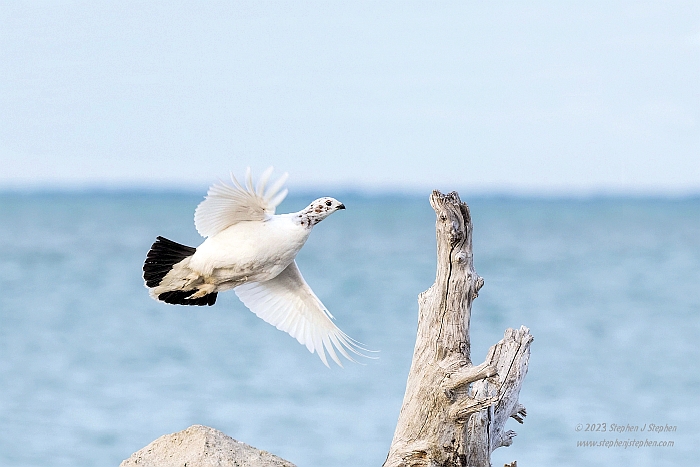
As usual, spring migration did not disappoint. I saw nearly 150 species and heard several others. I was able to add a number of species to my lif list including: a Willow Ptarmigan (a first sighting ever at Point Pelee), a White-eyed Vireo, a Western Tanager and an Eastern Whip-poor-will. Another first was watching a female Yellow Warbler building her carefully concealed nest over a two-day period.
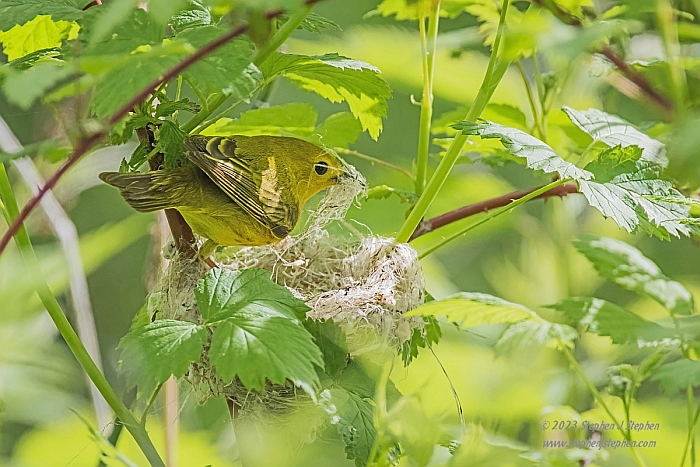
Some other exciting firsts were my first images of a Bay-Breasted Warbler, great images of a Golden-winged Warbler and well some images of an Eastern Garter Snake swallowing an American Toad. While the snake-toad interaction may not be to everyone's taste it is still part of nature.
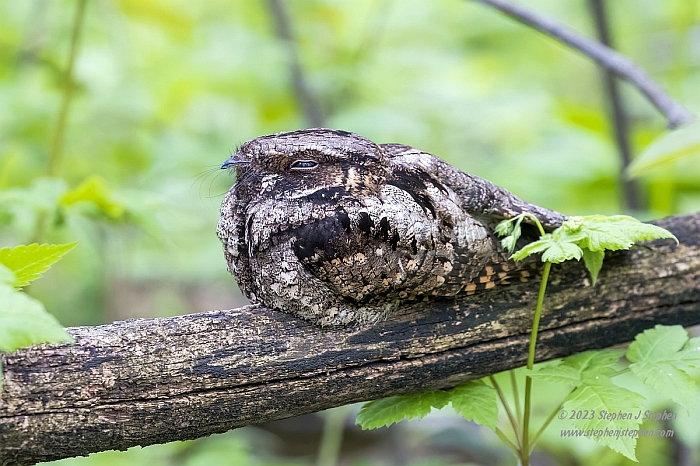
You can view two pages of my 2023 spring migration images here.
Apr 30, 2023
March and April of 2023 provided some interesting photo subjects. Over-wintering birds and returning waterfowl were common subjects. I did also ge the opportunity to photograph a Red Fox behaviour that I had always wanted to witness. While on a trip to Amherst Island west of Kingston, I photographed a fox hunting for filed mice and voles. After locating them under the snow the fox would leap high into the air to trap its prey under the snow.
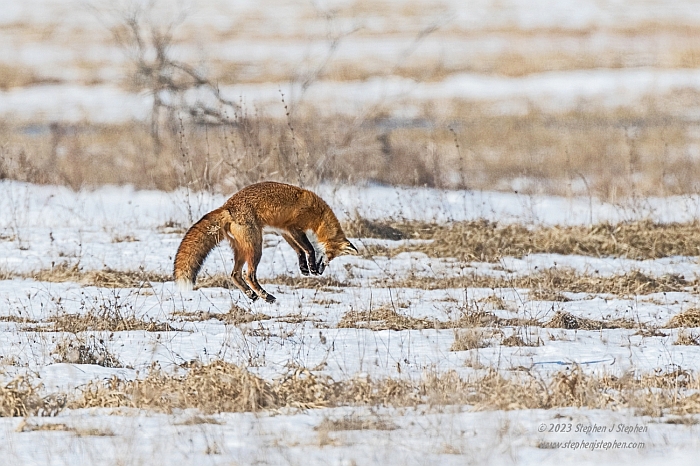
The next day I travelled to Presqu'ile Provincial Park near Brighton, Ontario for the spring waterfowl migration. Many species of waterfowl stop over in Presqu'ile Bay to rest and feed before continuing their spring migration to their breeding grounds. Courtship is in high gear at that time and you can often see drakes (males) of various duck species, fighting over a hen's (female's) attention.
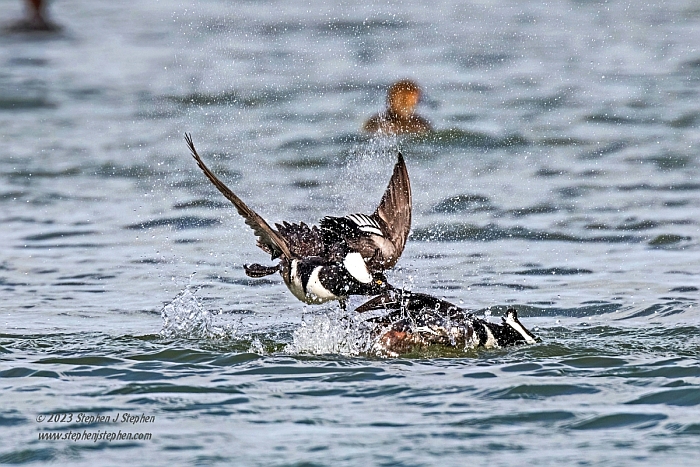
Back in Ottawa, many spring arrivals could be found in early April. Several waterfowl species could be seen courting of chasing off rivals. I also witnessed another behaviour between a pair of Ring-Billed Gulls. Courtship feeding is not new in birds but normally a male will bring a potential mate food. In this case, the male gull regurgitated some food for the female which she quickly accepted.
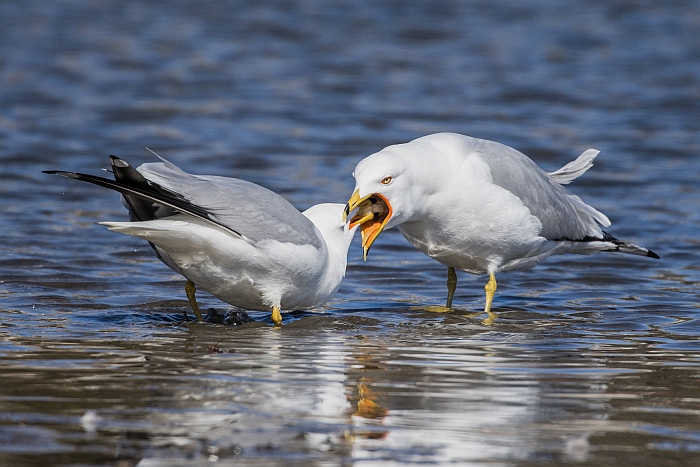
You can view more of my March and April 2023 images here.
Feb 28, 2023
The fall of 2022 and winter of 2022-2023 was, initially fairly quiet photography-wise. I did get to photograph a Praying Mantis as it created an eggcase (ootheca) and laid its eggs on the outside foundation of our daughter's home. It is a fascinating insect that is not seen that often in Ontario. The species is actually the European Praying Mantis which was introduced into the United States in 1899. It has gradually expanded its range up into Ontario.
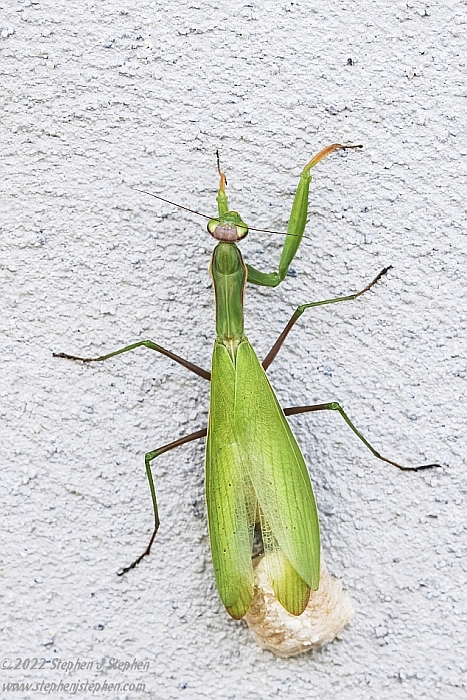
On January, 2023 things got more exciting. My wife Kay and I joined three other couples on an 11 day catamaran charter in the British Virgin Islands (BVI) located in the eastern Caribbean. The BVI is world famous for its beautiful beaches and fantastic snorkelling and scuba diving locations. The islands were indeed wonderful and they were a welcome escape from winter in Canada. In fact it was our first trip out of Canada since the start of the Covid Pandemic in 2019.
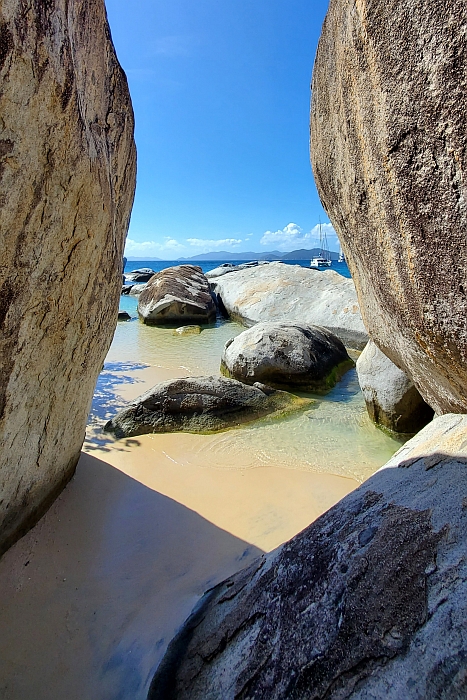
The charter cruise was also our first extended time on a sailing vessel. Our friend Barry Hill was the skipper and we all shared the work of sailing, mooring each night and preparing delicious meals each day. The weather was excellent with only light rain a couple of times. We visited many of the islands and snorkelled frequently. The beauty of Caribbean coral reefs is remarkeable. We swam with many lovely fish and even spent some time with a Caribbean Reef Octopus!
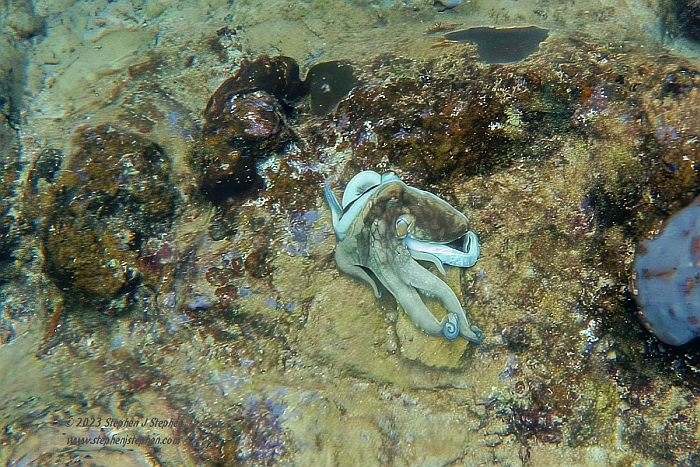
We flew to the BVI via the island of Sint Maarten, which is also in the Caribbean. Enroute home, we stayed in Sint Maarten for two night whihc gave us a chance to unwind from the physical work of sailing. All in all it was a memorable trip.
You can view more of my winter 2022-2023 images here.
Sep 30, 2022
July, August and September saw summer winding down. Insects like Leafcutter Bees were preparing homes for the larvae of the next generation. My wife Kay has a bee house which give solitary bees, like Leafcutter Bees, a place to lay their eggs. The bees lay their eggs in the hollow bamboo tubes and block the tubes up with circular pieces of leaves which they've cut from plants like her rose bushes.
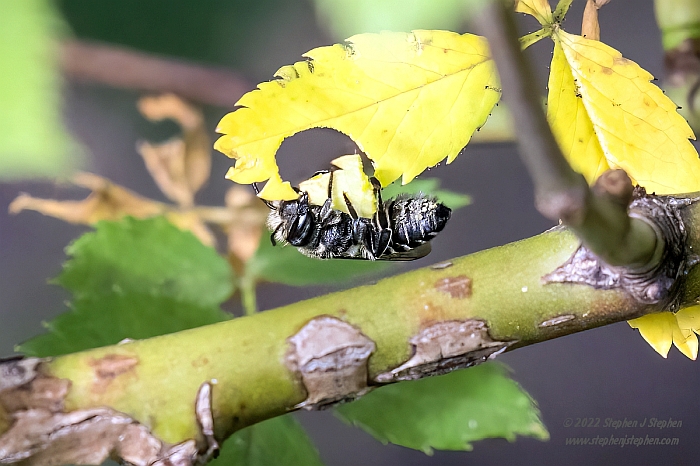
Fall migration for many birds actually begins in August. Shorebirds like Lesser Yellowlegs, Solitary and Least Sandpipers can be found foraging along waterways such as the shores of the Ottawa River.
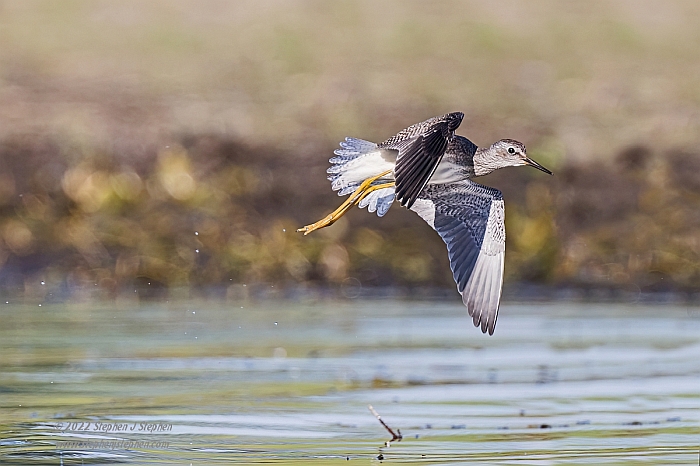
In September I attended the International Plowing Match (IPM) & Rural Expo 2022 which was held in Kemptville, Ontario. Kemptville is located about 40 minutes south of Ottawa. The first IPM was held in 1913 at Sunnybrook Farm, near Toronto. The IPM has been held every year since 1913, with the exception of 1918 and 1942-1945 which were not held due to WW2 & 2020, 2021 due to the COVID19 pandemic. The location changes each year but it has been held in various communities in Eastern Ontario several times.
While there is both tractor and horse ploughing competitions I focussed my efforts in photographing the plough horses. I've always been fascinated with work horse breeds such as Belgians, Percherons, Clydesdales and others. Their beauty and strength are inspiring.
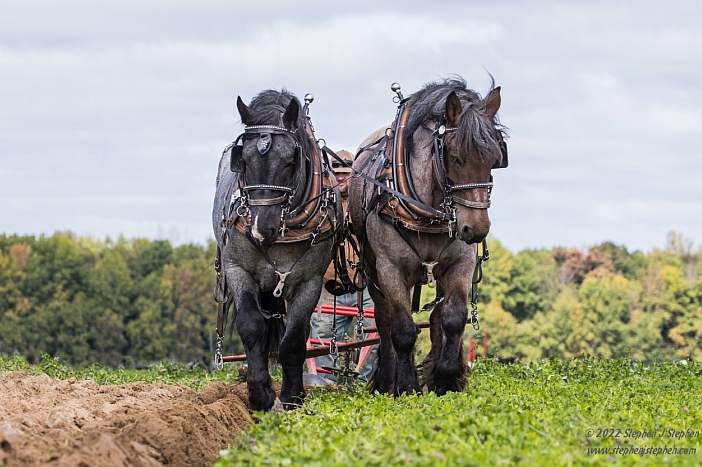
You can view more of my late summer 2022 images here.
June 30, 2022
In early June, I was invited back to Priest Creek Farms which is owned by my friend, and fellow photographer, Tammy McGarry. This time was I there to photograph her Appaloosa foals. They were in their summer pasture with their mothers. What a special treat to photograph these wonderful young colts and fillies on a beautiful summer day!
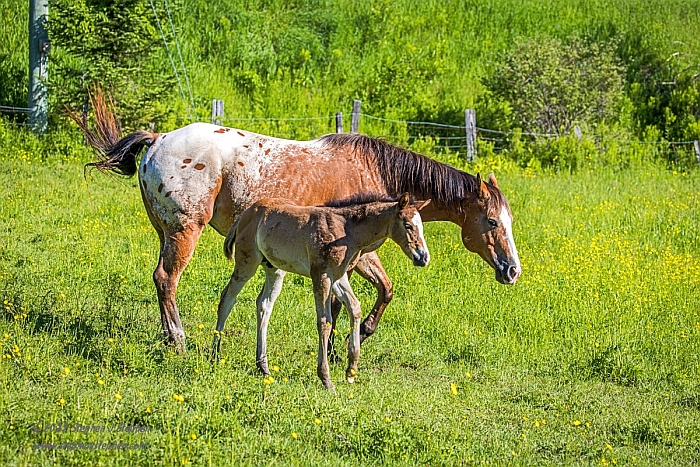
After that lovely day trip we were off to Algonquin Provincial Park for nearly two weeks of camping with our trailer. We love to unwind, sit around the campfire and enjoy good meals eaten outside in the fresh air. Of course there is always time put aside to look for wildlife photo opportunities and walking some trails as well.
I was hoping to find and photograph some moose mothers with very young calves but, despite my efforts I missed a couple of opportunities. Nevertheless, that I encountered many moose bulls, some cows and a pair of yearly twins. In addition, there were a pair of Merlins nesting high in the pines at the Lake of Two Rivers campground. The Merlins were very vocal, especially when the male brought in food for the female. They were often hidden by thick pines branches but occasionally I got to see one of the bird when it was in the open.
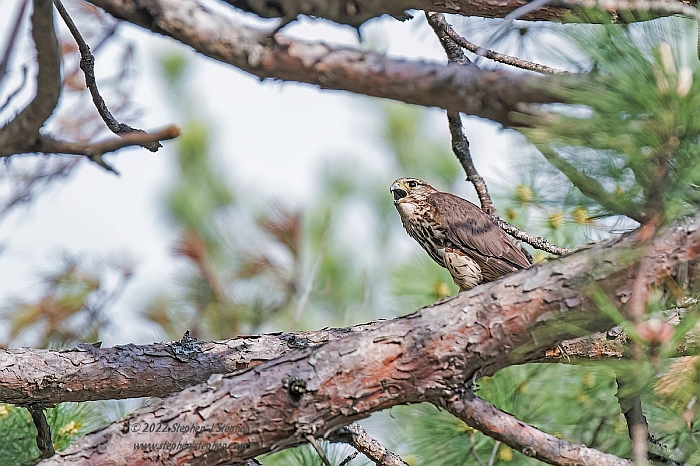
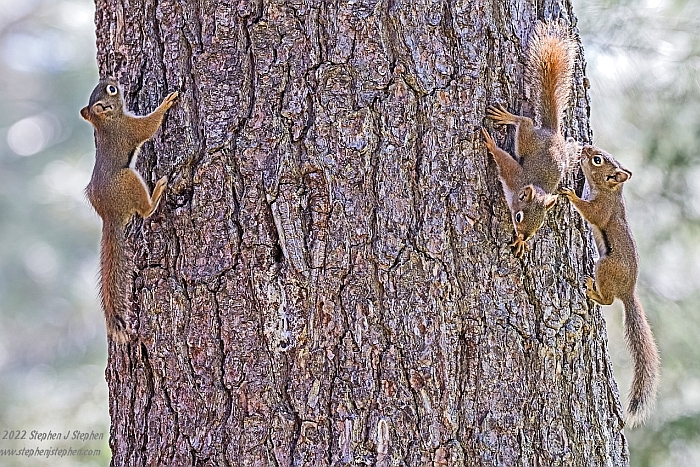
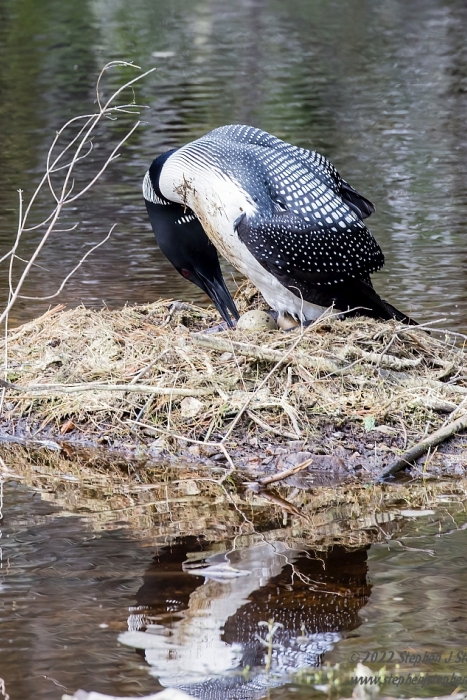
More of my June images can be found here.
May 31, 2022
The period between February and May, 2022 offered some unique photo experiences. Im March I got to capture images of both and American Mink and an American Robin catching and eating small minnow fish. While mink are well know consumers of fish, this was the first time that I witnessed American Robins repeatedly catch minnows through small openings in the ice.
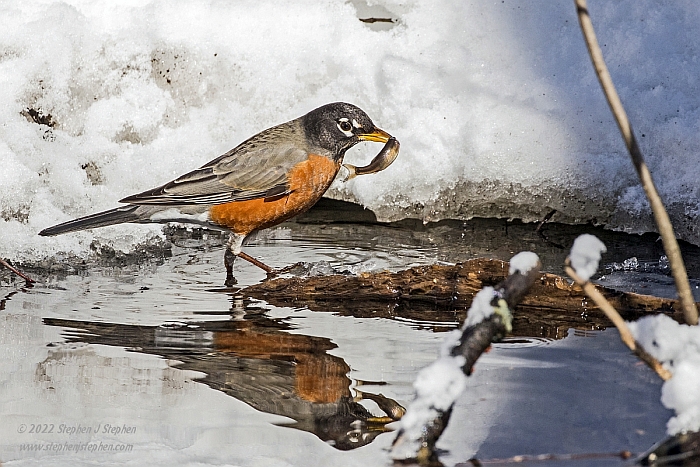
Bird courtship begain in early April for non-migratory bird species like Mourning Doves. Other species such as Snow Geese returning to rural areas south east of Ottawa while enroute to their Arctic breeding grounds. The first migrators, like Rose-Breasted Grosbeaks and Common Loons, began re-appearing in May and local Barred Owls began raising their young.
Our first camping trip of the year was once again at Murphy's Point Provincial Park, near Perth, Ontario. I got to observe River Otters, Common Loons and a nesting pair of Barred Owls. The owls had a nest hole right on an a nearby campsite but I was very careful not to disturb them.
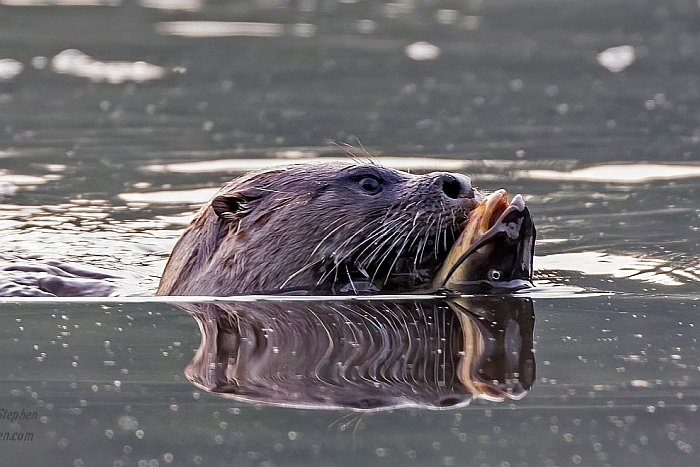
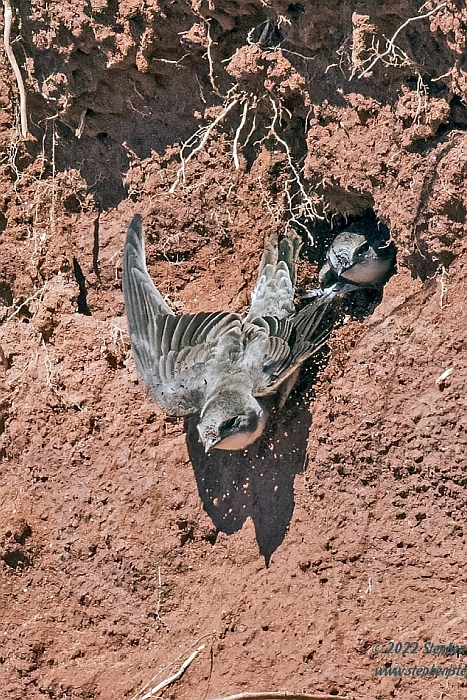
Additional examples of my February to May, 2022 images can be found here.
January 31, 2022
Winter is often a quiet time for nature photographers as many bird species have migrated south for to excape our harshest weather period. Despite that November 2021 to January 2022 still afforded me some photographic highlights. In November a Say's Phoebe visted Ottawa for a few days and I was able to capture a few images. It's normal distribution is in western North America so it's appearance got birders and bird photographers very excited. It was a list list addition for me.
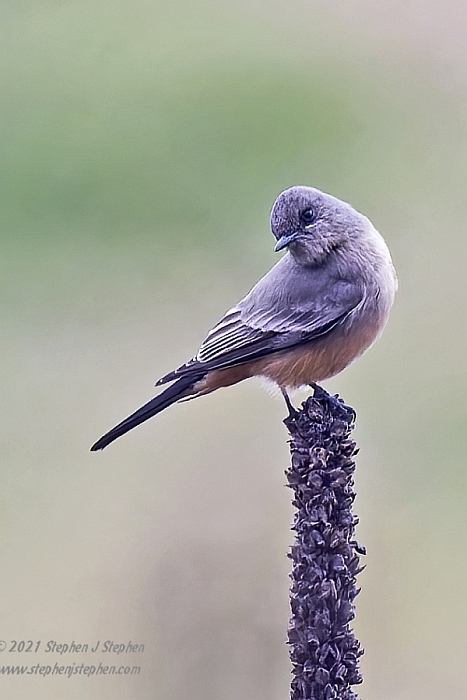
Another visitor was a male Black-backed Woodpecker. This species is more often found in the boreal forests of places like Algonquin Provincial Park. The bird spent several weeks in a forest in the community Constance Bay in west Ottawa.
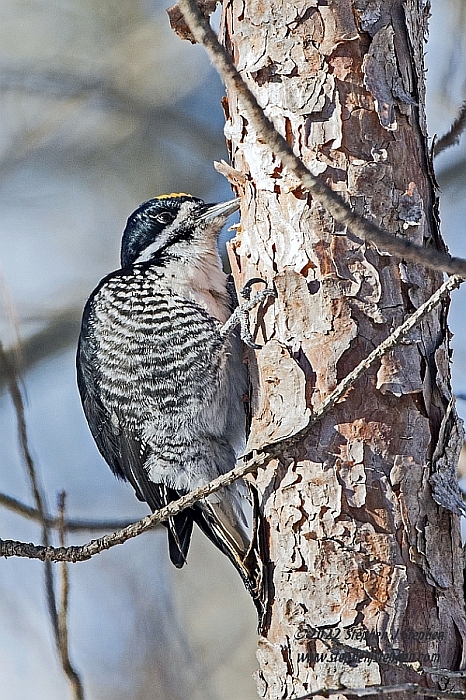
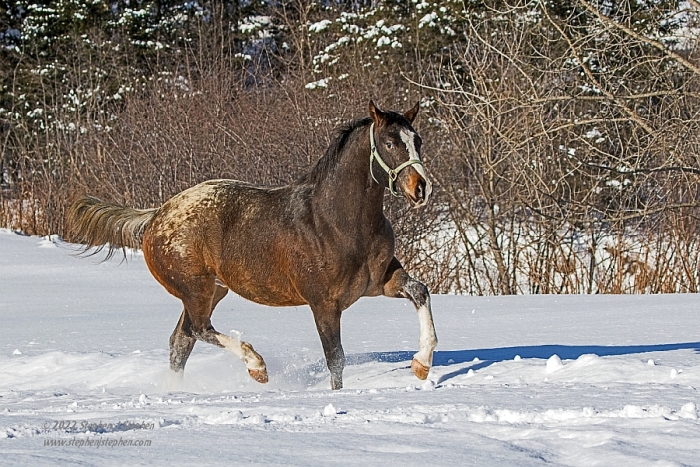
You can see more of my winter 2021-2022 images by clicking here.
October 31, 2021
We made two more trips near the end of the 2021 camping season. In September we returned to Murphy's Point Provincial Park and we stayed in Algonquin Provincial Park in October. Both parks offered me some interesting photo opportunities although I missed out seeing any moose during the rut in Algonquin this year. I got to photograph her handsomce stallion "Chocolate Justice" as well as wome overwintering birds during a day visit in January.
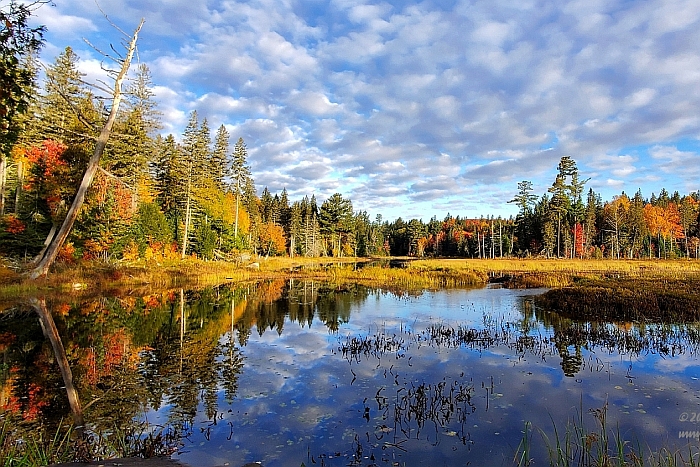
I managed to photograph a lot of smaller subjects including: an American Mink catching a Crayfish, a Garter Snake; several species of frogs; as well as a Dark Fishing Spider and a Hairy-necked Tiger Beetle. All in all it was another great fall for photography.
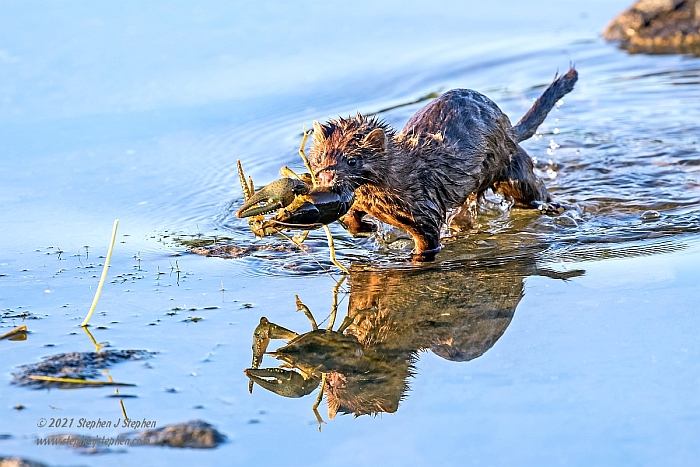
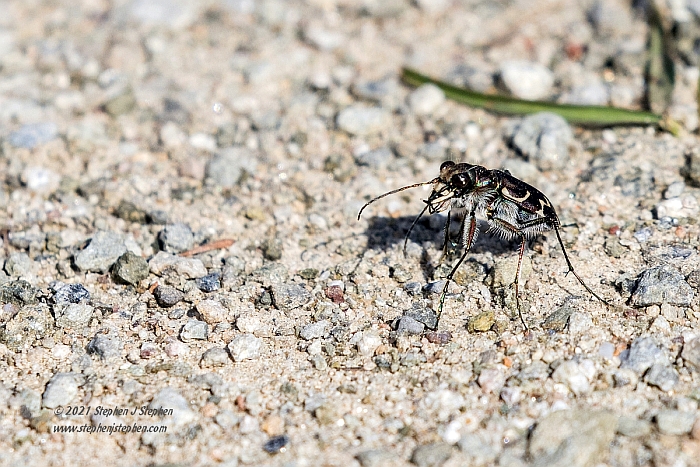
You can see more of my September and October 2021 images by clicking here.
August 31, 2021
June, July and August provided some nice opportunities for photographing both birds and mammals. I experimented with the high shutter speed and animal eye tacking capabilities of my Canon R5 mirrorless. It allowed me some great images of the fast-flying Purple Martins.
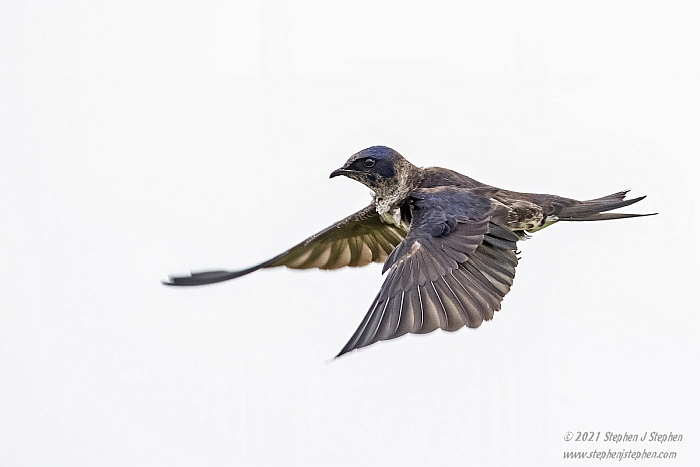
We got an opportunity to camp in Algonquin Provincial Park in June, for 8 days, and I had 17 moose sightings! With the exception of two yearly bulls, that I sighted twice, all of the animals were different individuals. I had hoped to find a cow moose with a young calf but only found a lone cow. Despite that it was an exceptional number of sightings which I doubt I would ever be able to repeat. I do hope to go back next June to find and photograph a cow and calf though.
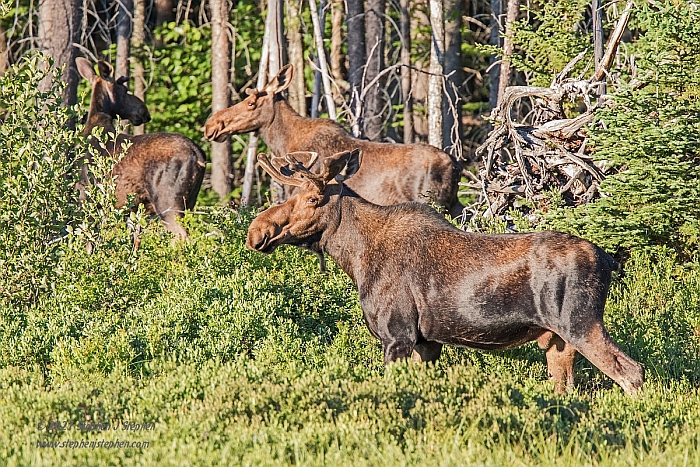
Closer to home I managed to photograph two bird species that are seen very often. The first was a Ruddy Duck, a species that is more often seen during spring and fall migration. Ruddy Ducks are small, compact diving ducks. I spent a few hours one morning in July with this female, or juvenile male, as it swam and preened in a small pond in a local park. The second was a family of Common Gallinule (formerly Common Moorhens). These birds breed in Ottawa but are normally fairly secretive, nesting and raising their young in thick marshes where spotting them takes some work.
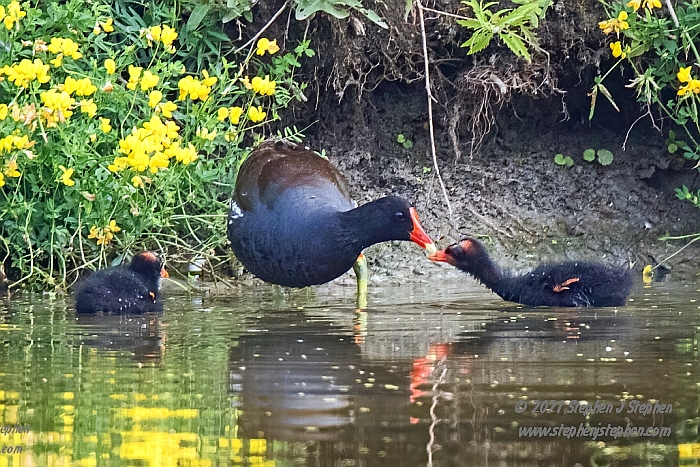
A very exciting thing occurred right outside our front door this summer. A pair of Northern Cardinals built a nest in my wife's apple tree. Two babies hatched but unfortunately, as often happens in suburbs, a neighbourhood cat found the nestlings. Perhaps if the Cardinals try to nest again next year I can take some measures to prevent another predation.
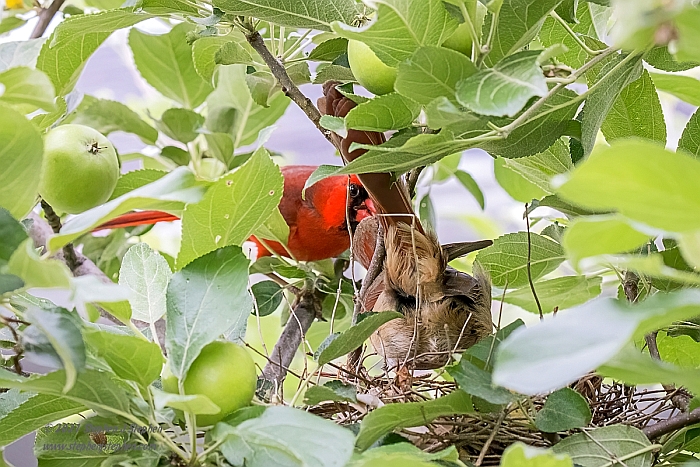
You can view more of my summer of 2021 images by clicking here.
May 31, 2021
May offered a wide varirety of photo subjects this year. Many people are familiar with Canada Geese which are found almost everywhere in North America. Fewer may have seen the white Snow Geese, with black wing tips, that migrate, sometimes in the tens of thousands, through eastern Ontario in spring and summer. Both of these birds have smaller related species that look, at a quick glance, to be no different than their larger relatives. It pays however to scan migrating flocks of Canadas and Snows to look for these smaller species that, otherwise, might be missed. The Cackling Goose is small, compact with a short neck and small bill and looks like a small Canada Goose. Its plumage almost identical but its head and bill are smaller thatn a normal Canada. The Ross's Goose is a small white goose, with black wing tips, and a stubby pink bill. Luck was on my side the day that individuals of both of these less common birds were found in the same local park pond on the same day.
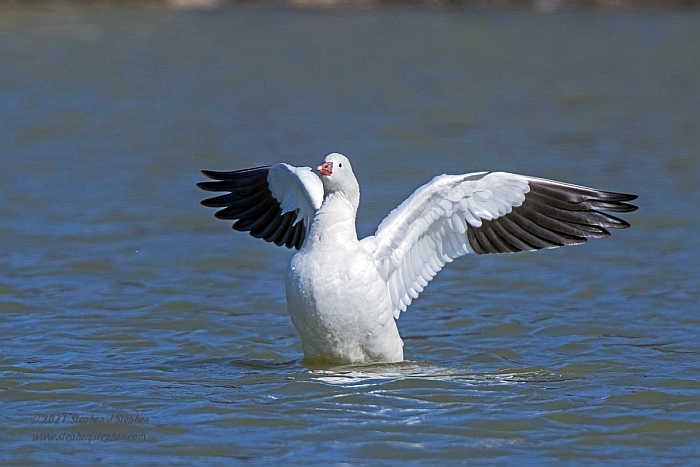
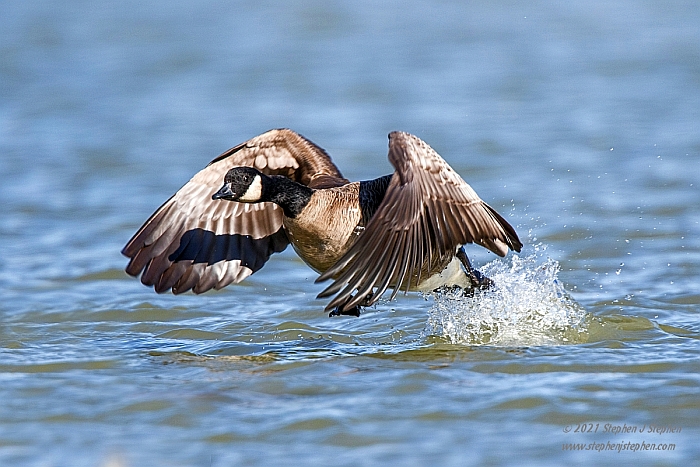
We had some unseasonably hot days this May. As a result a large number of bird species visited our bird bath multiple times daily to either quence their thirst or to cool off. In my experience American Robins absolutely love bathing daily if given the chance. Many other species followed suit in our yard: American Goldfinch, Song and Chipping Sparrows, Purple Finches, Common Grackles and other. I decided to photograph as many species as I could to try and document the behaviour.
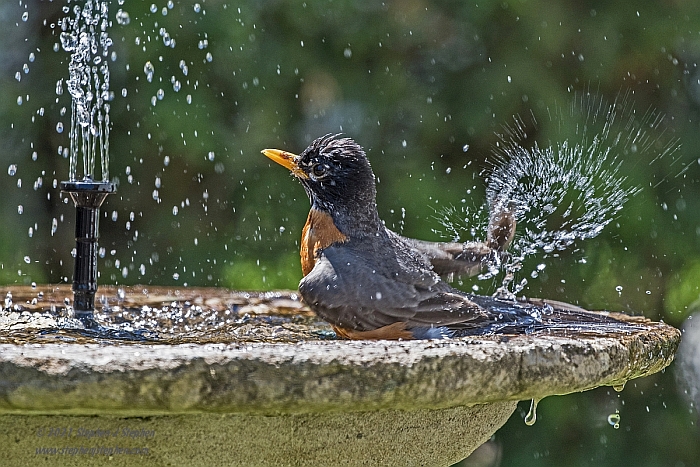
While out looking for subjects one day I noticed a mixed flock of Common Grackles and Red-winged Blackbirds in the distance. They had congregated on several trees along a large creek. I could just make out a larger, dark form on a branch. Using my binoculars, I could see that a mink was in the tree. I assumed that it was loooking for bird nests and eggs. The birds were swarming it as they often do with predators. I watched for a while and the mink finally climbed down and disappeared into the lower vegetation along the waterway. Even though I couldn't see it I could follow its progress by watching the birds as the continued to keep close watch on its location. Gradually the birds, and the mink made theior way towards my location by the roadside. Suddenly I could see vegetation moving just below me. The mink popped up looking up at me from the base of the roadbed. It had a den near the water's edge. I was able to create a few more iamges of it before it disappeared.
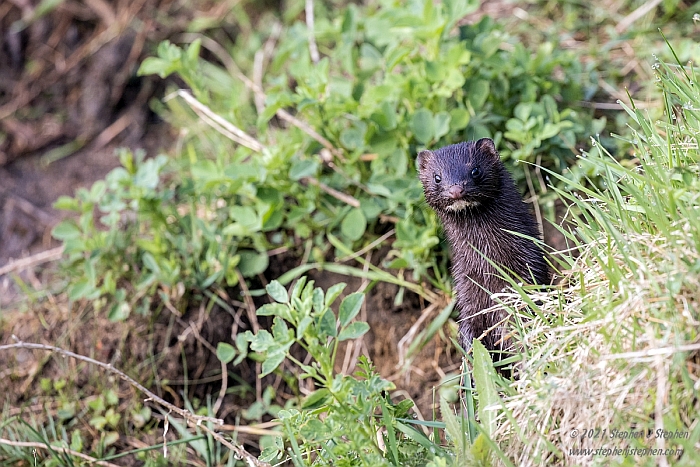
You can view more of my May 2021 images by clicking here.
March 31, 2021
I was able to get out shooting a fair amount during the month of March. Snow was still on the ground and at least some ice was on many of the waterways. I photographed a Carolina Wren for the first time. I had occasionally seen this species before, most often as it passed through our back yard during spring or fall migration
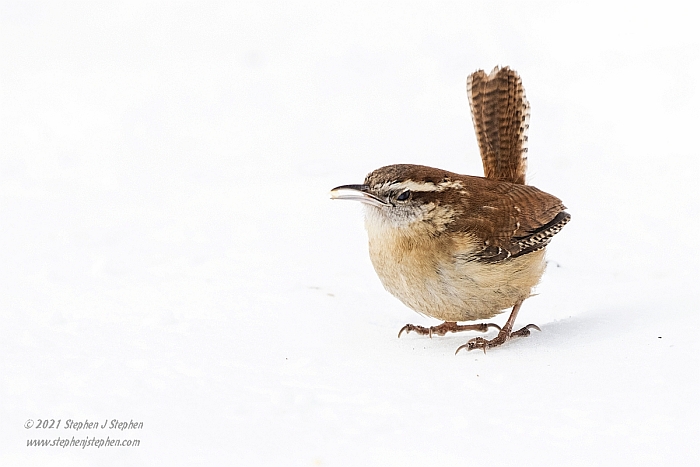
Birds of prey were also subjects during the month. Snowy Owls, Short-eared Owls, Northern Harriers, Rough-legged Hawks and Bald Eagles can all be found searching for food. It often takes time, patience, perseverance and some luck to create images of them though.
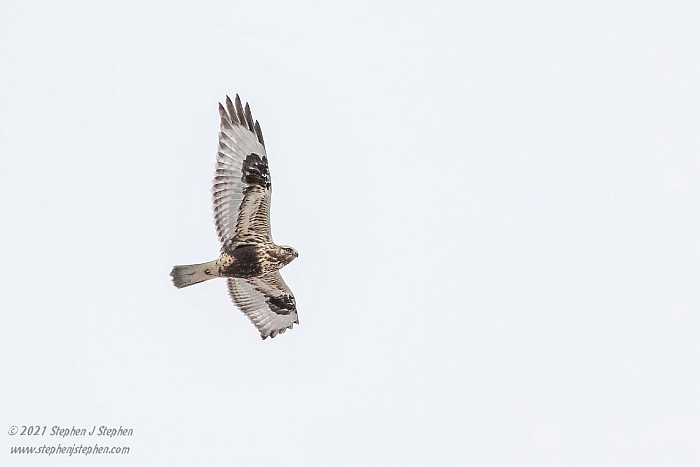
Sometimes I need to travel, for my photography, to other areas of Ontario during this time of year. Locations around Lake Ontario can offer milder weather conditions and more food for animals. Amherst Island, west of Kingston, can be a haven for birds or prey. Its wide expanses of farm fields can contain lots of rodents for both birds and mammals alike. On a trip there this month I watched a Red Fox and a Black Cat interacting with each other. Very strange behaviour that I was pleased to observe.
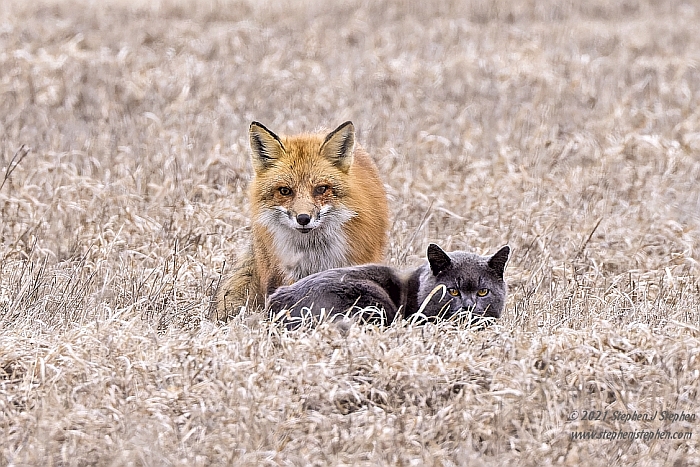
March is also an important time during the spring waterfowl migration. Many species have arrived back from their wintering grounds, finding mates and preparing to move back to prime nesting locations in the coming weeks. The waters of Prequ'ile Bay and Presqu'ile Provincial Park are a perfect staging ground for thousands of birds. My trip there in late March provided a large number of photo subjects.
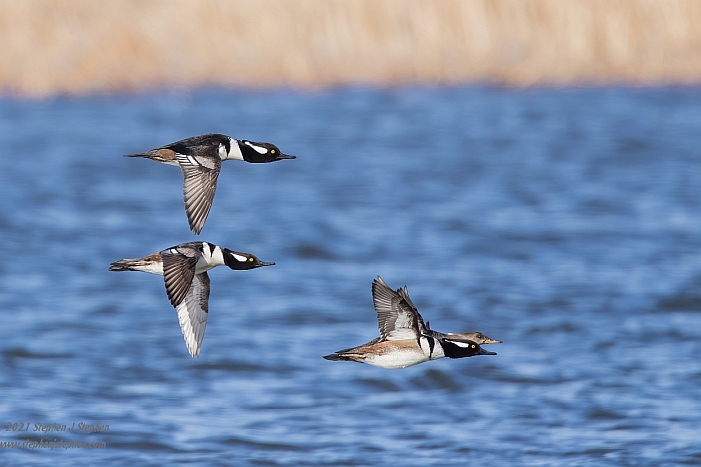
You can view more of my March 2021 images by clicking here.
February 28, 2021
Nature photography continues to be challenging during the Covid Pandemic. That being said there were still opportunities to see new and exciting things and create some interesting images. November arrived as did flocks of Snow Geese on their southward fall migration. Most Snow Geese are white but a portion of the population has darker colouration and are called 'Blue Phase' or 'Blue Morph' Snow Geese. Either coolour variant cal breed witht eh other but you will often see families with just 'Blue Phase' ndividuals.
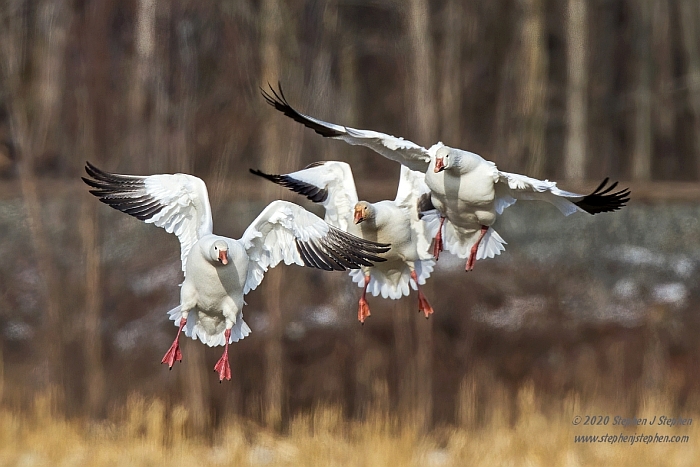
The White-tailed deer population started its rut in November and species like Gray Squirrels started gathering nest materials in preparation for winter. It's aways excited to see big White-tailed bucks looking for mates.
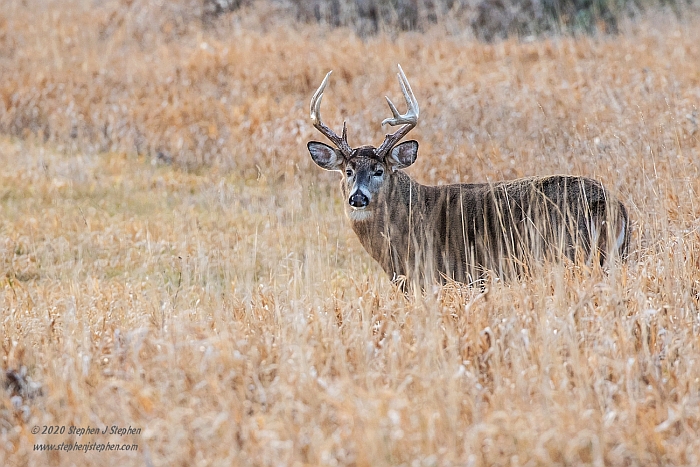
When winter, and snow, finally arrived a number of winter species visited the Ottawa area. I was lucky enough to sight a Great Gray Owl one day and watched it catch some food. Great Grays are occasional winter visitors to the area and are rarely found in any large numbers. Other winter visitors including Common and Hoary Redpolls with Common Redpolls sighted widely sometimes in quite large flocks. I observed one flock with an estimated 3000-4000 individuals as it flew around a farm field feeding on seeds. Despite being quite a small species, they were so numerous that their wings sounded like the wind.
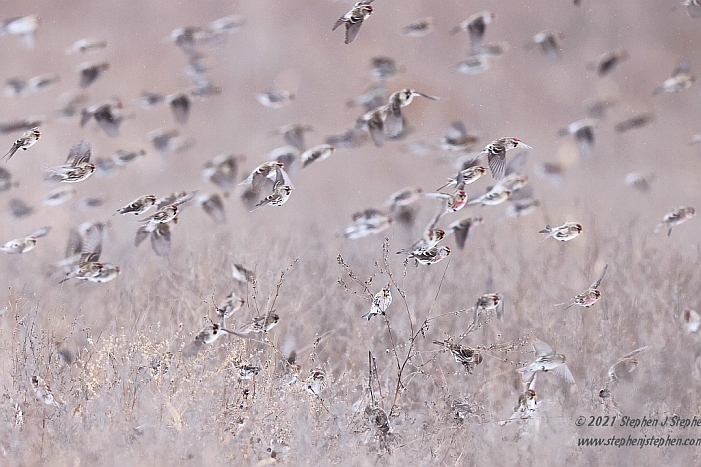
Other winter species included Snow Buntings, Horned Larks and a few Lapland Longspurs. All three species are often found foraging in farmers harvested cornfields and along the roadsides. As January passed and February ended waterfowl species began courting and mating signalling the start of a new generation.
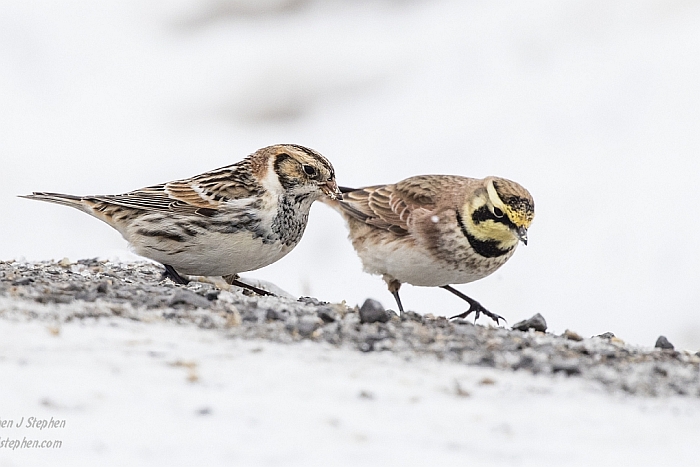
You can view more of my fall 2020 and fall/winter 2020-2021 images by clicking here.
October 31, 2020
The Covid-19 pandemic has continued worldwde although. Fortunately the province of Ontario opened its parks to camping with social distancing rules in effect. We were able to doo some fall camping for limited times in both Algonquin and nearby Lake St. Peter Provincial Parks. It was nice to get away and to spen some time in the great outdoors. Due to a moist summer and early fall there were lots of mushroom species to photograph, particularly at Lake St. Peter. I am not very good at fungi identification but I do find the various species attractive in both colour and shapes.
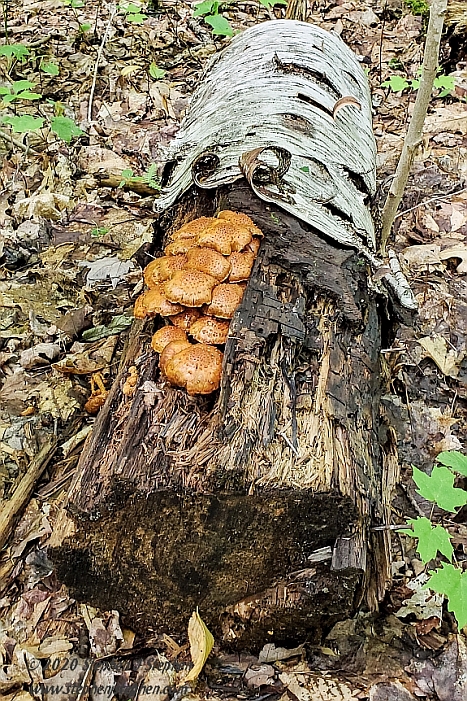
In Alqonquin Provincial Park our campsite was in the territory of a male Red Squirrel who was very defensive of his domain. He amused us daily with his antics including: gathering hundreds of pine cones for his winter larder, stomping his feet and scolding us whenever he had the chance. He did take some time out of his busy day to do some grooming as well.
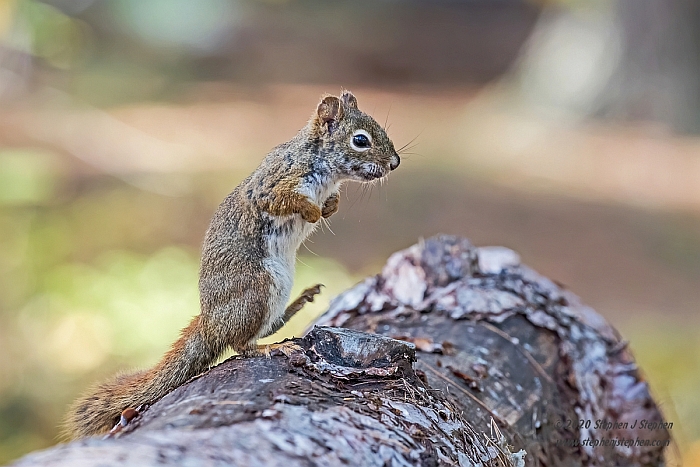
Although I spent many days looking for moose in Algonquin during the fall rut, I hseemed to just miss seeing them every outing. I did have better luck with Spruce Grouse. I spent nearly 39 minutes, one morning, with a handsome make who was displaying for a nearby female.
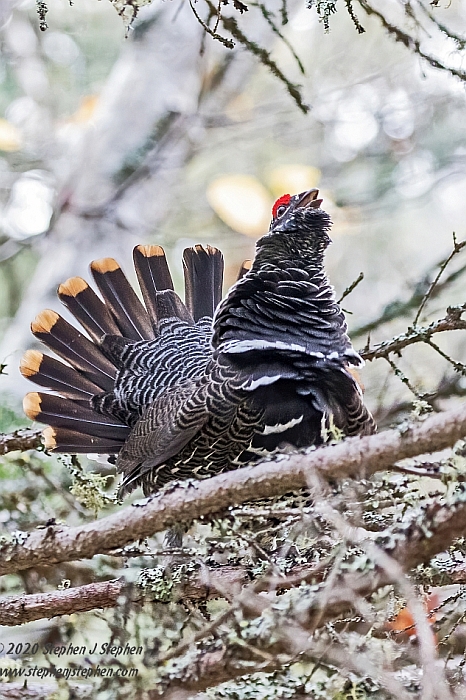
I also had the opportunity to photograph some lovely scenery and insects.
You can view more of my late summer and early fall 2020 images by clicking here.
July 31, 2020
The worldwide Covid-19 pandemic touched us as it had with everyone. Plans to travel to Atlantic Canada, during the summer, with our new camping trailer had to be cancelled. As a result we stayed very close to home during June and July. Even the Ontario provincial parks were closed to camping until June. Despite these inconveniences, we stayed healthy and I did have some wonderful photographic experiences.
The Red-headed Woodpecker (Melanerpes erythrocephalus)is a striking-looking species. My first time seeing one was in rural Ottawa during the winter of 2005-2006. I had only seen them rarely since then. Ottawa is at the extreme north of this species' North American distribution.
In 2018 the Committee on the Status of Endangered Wildlife in Canada (COSEWIC) listed it as "Endangered" in Canada. In Ontario, where the numbers are slightly higher than in other parts of the country it is only listed as a species of "Special Concern".
I had the good fortune to photograph a pair as they excavated a nest hole and prepared to raise a family. Just before the young were getting ready to leave the nest I stopped visiting the site to avaoid putting undue pressure on the family
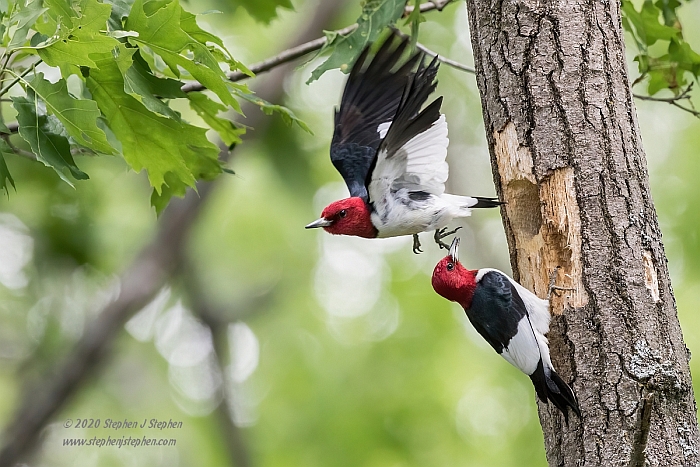
Sometimes you don't need to have a lot of equipment, or travel far, to see nature. I was able to also document a family of American Robins from egg to nearly fledging using my cell phone. The mother had laid her 'robin blue' eggs in the hanging flower basket at my cousin's house just up the street.
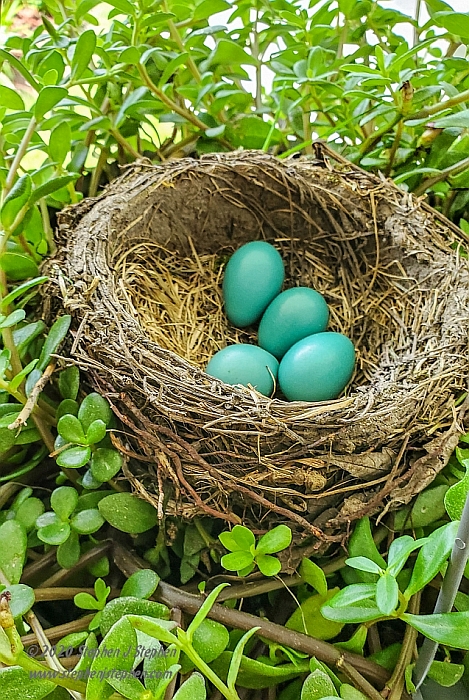
Other birds were raising their young over the summer as well. Two families of normally secretive marsh birds (Virginia and Sora Rails) nested in a small marsh area at the Richmond sewage lagoons. This particular lagoon was mainly dry and both species lived in a small island of vegatation. They, and their young, could be easily seen as theyr foraged for food along the fringes of their safe haven.
As usual birds are a favourite subject but I also had the opportunity to photograph muskrat, turtles, snakes, frogs, bees and dragonflies.
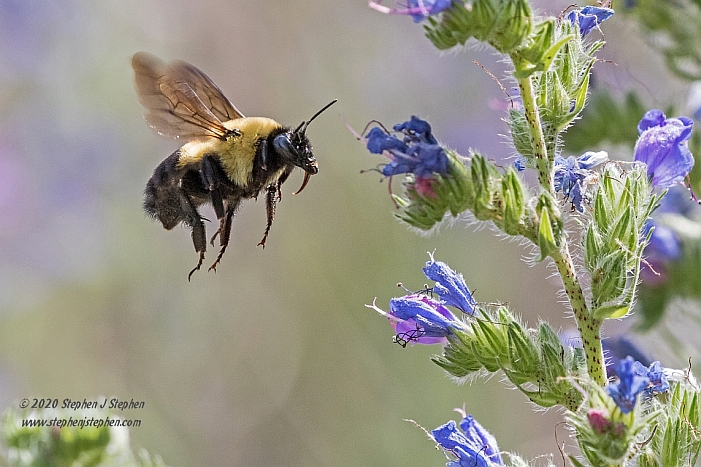
You can view more of my summer 2020 images by clicking here.
May 31, 2020
During March, April and May the photographic opportunities around Ottawa were many. Snow reamined on teh ground in March so some winter species, Like SNow Buntings were still around.
The bird spring migration was in full swing by May but some winter resident birds and animals were already having young leave the nest or den. I was able to photograph, Eastern Screech and Barred Owl fledglings as well as fledgling Ravens. Cute Red Squirrel babies and Red Fox Kits were also some of my subjects.
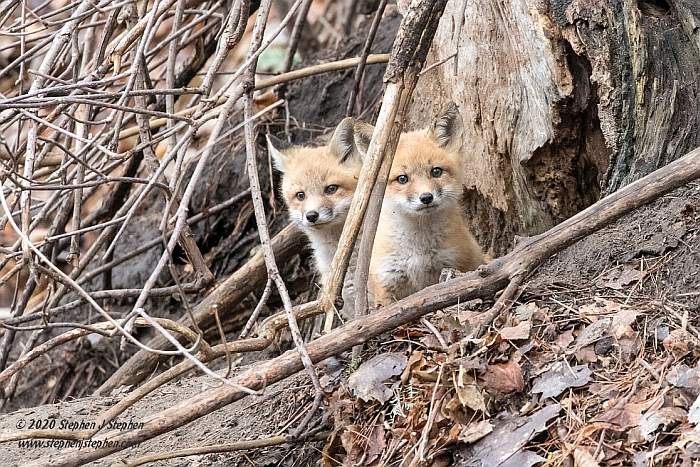
A number of warbler and duck species were still on the move to their breeding locations. Other birds had settled here and were starting preparations for raising their families. Canada Geese often arrive and begin nesting while snow is still covering the ground. Their yellow, fuzzy goslings begine exploring their world shortly after hatching.
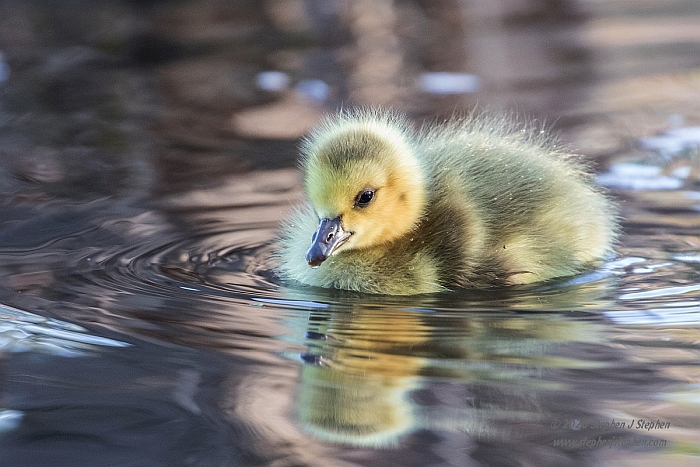
I spent some time trying to get better images of birds in flight. These are always a challenge but I have seen improvements in my success rate.
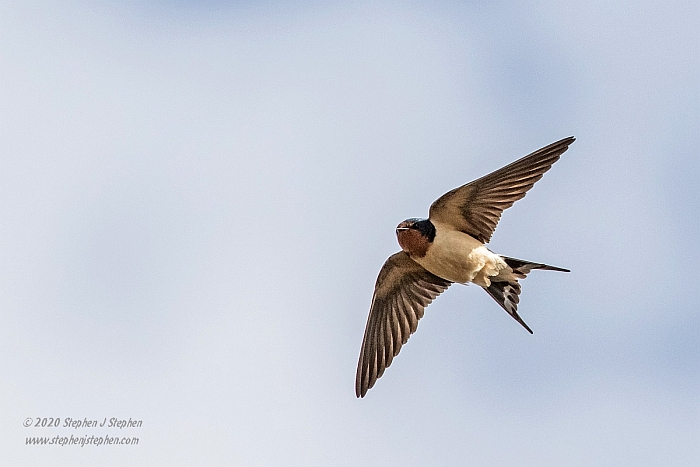
You can view more of my March, April and May 2020 images by clicking here.
Feb 28, 2020
During January I did not have many photographic outings except to visit the Northern Hawk Owl again. I did however take a day trip to western Québec where I managed to photograph a Northern Shrike. Northern shrikes are predatory songbirds that hunt small birds and rodents. They often cache their prey by impaling them on thorns or barb wire. This behaviour gave rise to their other name "butcher bird".
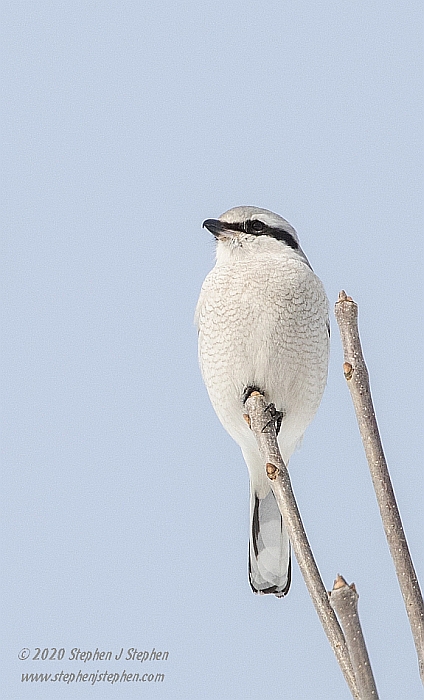
In February we had the good fortune to be invited to visit friends who have a winter home in Naples Florida. It was the first time that we were able to spend time along Florida's Gulf of Mexico. As with much of Florida, wildlife is very tolerant of humans as they are seen daily. This afforded me plenty of opportunities to capture images of many species, particularly birds.
I was very pleased to create images of a number of species for the first time including: Loggerhead Shrike, American Skimmer, Royal and Sandwich Terns and the Florida Soft-shelled Turtle. While on e day trip to Everglades National Park I also got to see large numbers of American White Pelicans and some playful Bottle-nosed Dolphins. These birds stay in Gulf waters all winter before migrating back to their breeding locations in the northern United States and several western Canadian provinces and territories.
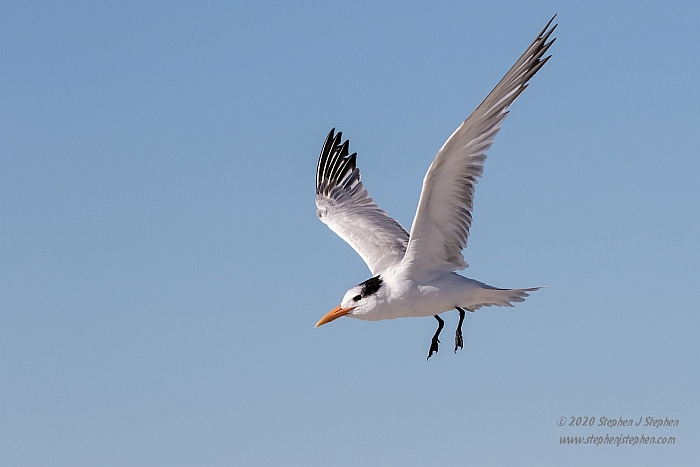
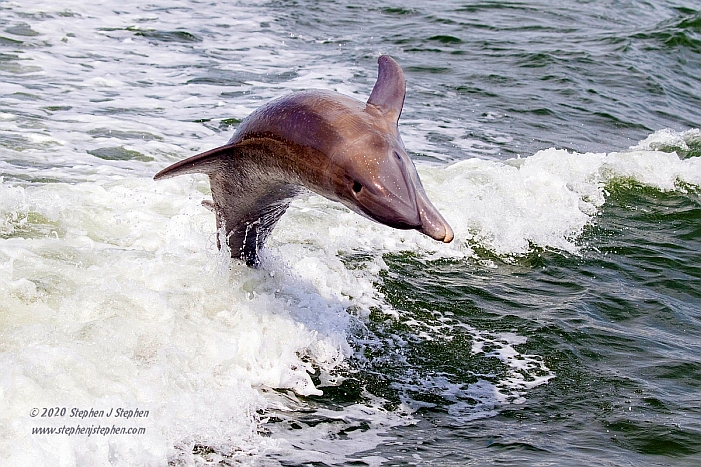
You can view more of my January and February 2020 images by clicking here.
Dec 31, 2019
Due to other responsibilites, my photographic outings were not very numerous in November and December. Despite the low number I was very happy to have opportunities to create some wonderful images particularly in December.
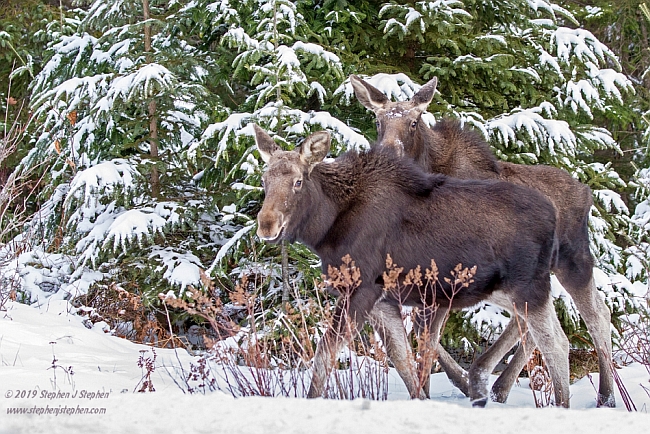
The first opportunity came during a day trip to Algonquin Provincial Park in early December. Overall it was a very quiet day subject wise that was until the last hour there when I found a family of moose feeding. The cow and here twin calves (one female and one male) were browsing out in the open along highway 60. It was my very first time phtographing moose in a winter scene. The snow covered ground and foliage certainly provided a very different backdrop for my subjects
My most favourite photography subject of the two months was a Northern Hawk Owl. Northern Hawk Owls are boreal birds of prey that are seldom found as far south as eastern and southern Ontario. They may only travel this far south every 6-10 years when the abundance of their prey drops in the north and they must seek out food elsewhere.
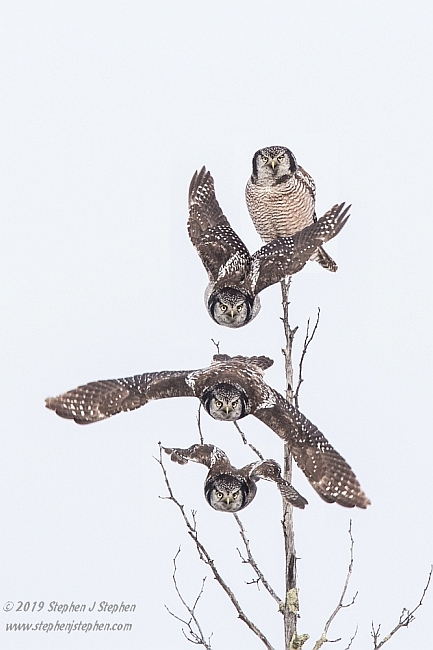
As its common name implies the Northern Hawk Owl resembles a hawk more than an owl in both appearance and behaviour. Unlike many owl species Northern Hawk Owls hunt primarily in daylight hours capturing rodents such as voles and small birds. The species rarely comes into contact with humans so individuals often show little or no fear of people. Such was the case with this particular bird. On almost every occassion that I visited the owl it actively hunted for food, flew around and preened. It also often cached its prey for later consumption. Some owl species and other predators often do this to keep a supply of food nearby. This meant that the owl could return to its cache, to obtain food, when storms prevented it from actively hunting.
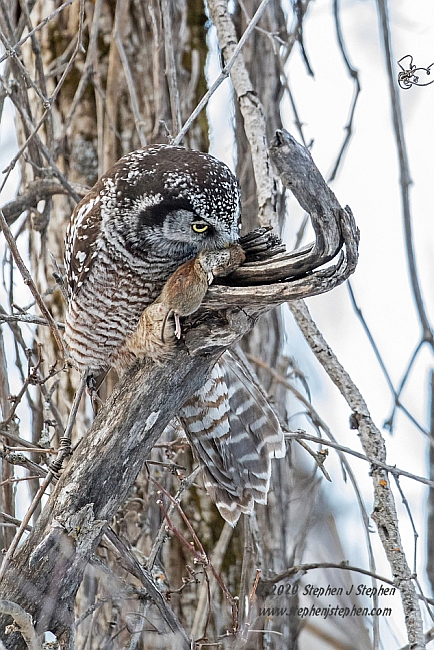
You can view more of my November and December 2019 images by clicking here.
Oct 31, 2019
During the summer and early autumn I stayed close to home except for a quick visit to New Brunswick in July to visit family.
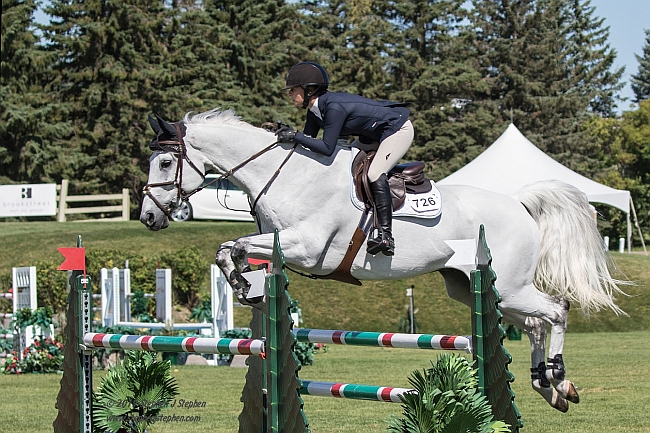
A first for me was to attend show jumping at the Ottawa International Horse Show at Wesley Clover Park. I have always loved watching show jumping but had never seen it in person. You certainly get a whole different perspective seeing the riders and horse up close while listening to the thunder of the horses' hooves
I also made a short, three day trip to Algonquin Provincial Park in mid September. The park was unusually quiet as far as mot birds and large mammals were concerned but I did manage to find a number of small birds of prey one day which were facinating to watch.
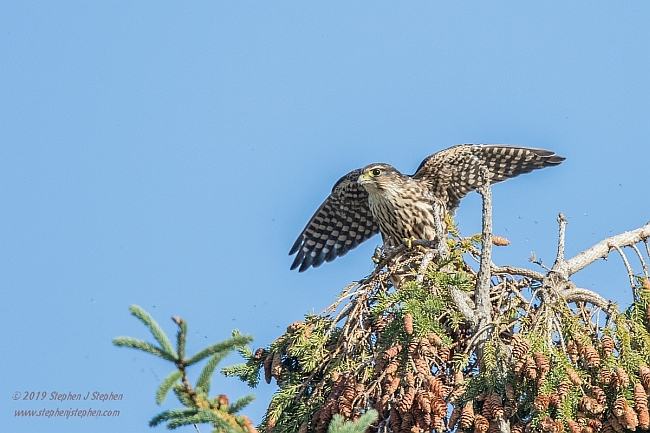
From August into October I explored some of my favourite places around Ottawa looking for migratory birds and enjoying the scenery as fall colours started to appear.
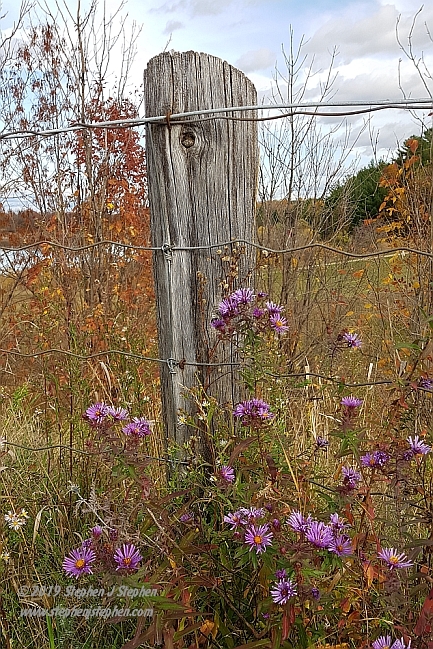
You can view more of my July to October 2019 images by clicking here.
June 30, 2019
Following our trip to the Galápagos Islands in April it was back to photographing the beauty of Ontario. I was fortunate to see migrating waterfowl, spring birds, flowers and wildlife including my first ever Green Sweat Bee. Sweat bees are small, solitary bees that nest in holes in the ground. They feed on the nectar of flowers and are quite attractive with their emerald green colour.
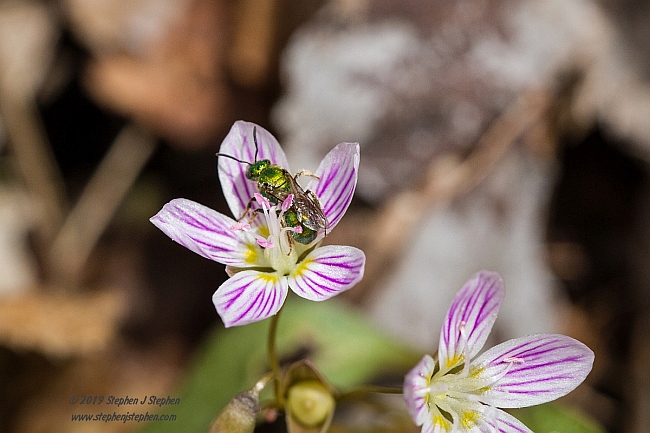
This spring a pair of Barred owls nested in a nearby forest. I was very careful to not stress them particularly during breeding season.
Another exciting experience happended when I spent over an hour with 2 families of Canada Geese. While many Canada's nest in local parks these birds had all nested and raised their young in a location that was mcuh less grequented by people. I had been photographing the fuzzy goslings from quite a distance when they and their parents slowly approached me as they grazed on grasses. At times the young would stop for a brief nap.
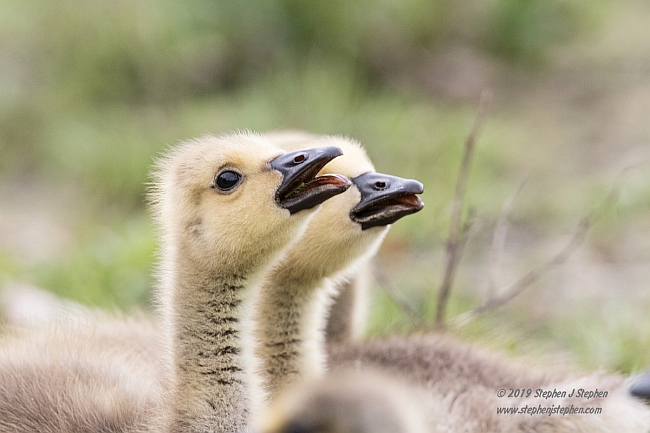
Although I focus mainly on wildlife photography I am always open to try different styles. I was invited to participate in a steel wool photography session with other photographers.
Steel Wool photography allows you to capture nighttime, long exposure fireworks-type images of steel wool as it burns in a metal kitchen whisk while being spun around on a chain or line. Heavy gloves and safety glasses were essential for safety. I would love to try this method again some time
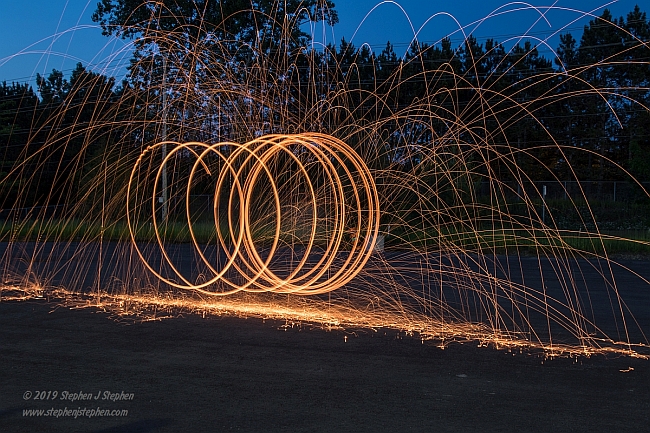
All in all it was an enjoyable spring. You can view a page of my spring 2019 images by clicking here.
Apr 30, 2019
During April we spent two glorious weeks on a vessel cruising around the Galápagos Islands of Ecuador. The Galápagos is an archipelago of volcanic islands, along the equator, in the Pacific Ocean about 1000 Km (600 miles) from Ecuador's mainland coast. The Galápagos archipelago is a national park but at least 35,000 people live there primarily in several communities. Most animals on the islands show no fear of humans and because of this, as well as sensitivity of the habitat, nationally trained and approved nature guides supervised our daily excursions on both land and sea. Both our guides were extremely knowledgeable and passionate about their jobs and the islands.
The Galápagos Islands were visited in by Charles Darwin in 1835 and his observations there inspired him to write his theory of evolution. While becoming a biologist during my university training we learned a lot about his work.
We booked our trip with G Adventures, through the CAA Travel Store Ottawa, and sailed on the 16 passenger vessel "Estrella Del Mar'. Our choice of time of year and duration was made for several reasons. The first was because some species, like the Waved Albatross (see below), start arriving on the islands in April to begin their breeding season. Second, water temperatures are warmer during that time making it comfortable for snorkeling. Third, we wanted to visit as many of the islands as possible because many species of plants and animals are unique to certain islands. Lastly, a smaller vessel could access several of the small islands where larger vessels may not.
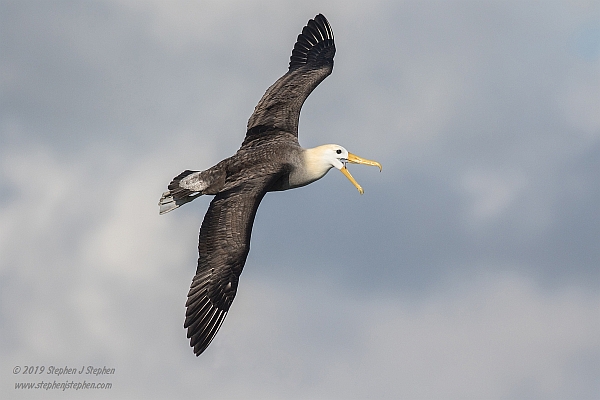
As mentioned earlier the Galápagos Islands are volcanic and many of islands are rugged, hot and dry. Other locations had lush vegetation. We normally had two land and two snorkeling excursions daily. Each trip began with a Panga boat shuttle ride from our vessel to a snorkeling location or to a shore landing site. Landings were either 'dry' or 'wet'. Dry landings were on rocky, often wet and slippery, shores or on concrete landings pads. The boat crew would use the outboard motor to run the panga up tight to the rocks using while we climbed out. Wet landings involved drifting, stern end, into a beach with the waves and jumping off the sides of the pangas into 1-2 feet of water in the surf. Each landing method offered its own challenges but the experience and skill of the crew always made it safe even if it was sometimes exciting.
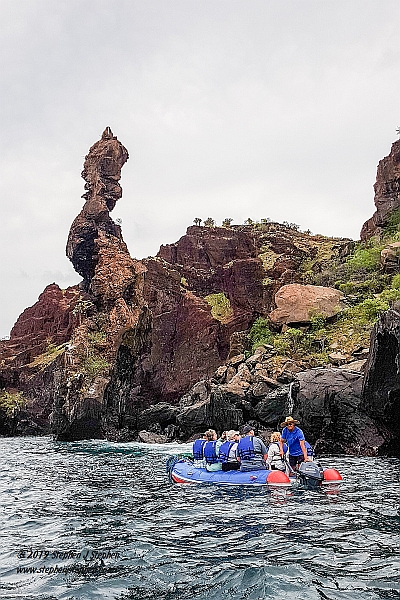
Like Namibia, that we visited in 2015, the Galápagos is a wonderful and fascinating place. In particular, the animals were often unique looking and the proximity that we had to them, was something that I have never experienced in many years of wildlife photography. If you ever have the opportunity to visit this magical place, don't hesitate to go.
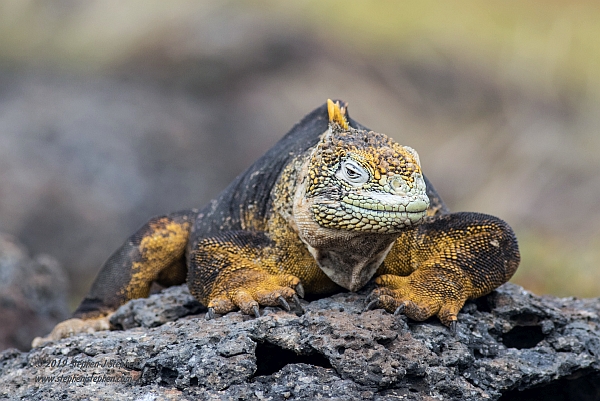
You can view two pages of my Galápagos images by clicking here.
Feb 28, 2019
The influx of winter bird species continued around Ottawa during January and February. Evening Grosbeaks could reliably be seen and photographed in several locations and other species like Common, and to a lesser number Hoary, Redpolls were also found.
A much rarer species was also seen around Ottawa. There were at least two Gyrfalcons who overwintered in the area. The Gyrfalcon is a magnificent bird of prey and the largest falcon in the world (see below). It normally lives and breeds in the Arctic and tundra regions in the northern hemisphere. The ones that were here this winter frequently hunted ducks along the Ottawa river and then fed on them on the ice. On two separate occasions I watched a mature Bald Eagle steal a Gyrfalcon's prey shortly after it had hunted. Eagles are opportunitic birds and will steal prey when they can. They must have been watching for the Gyrfalcons when they arrived on the ice with their prey.
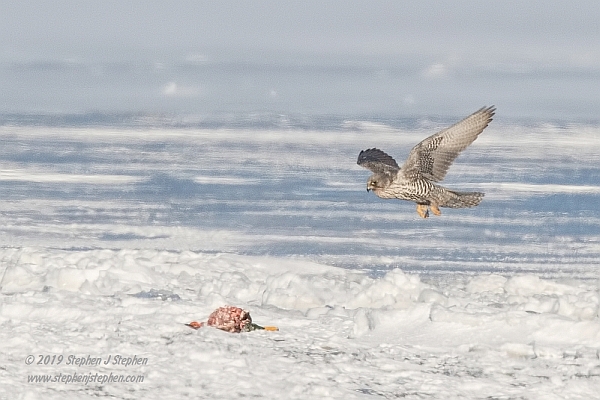
In February I again returned to Amherst Island on Lake Ontario. The island is often a great place to find birds of prey during the winter. This winter was exceptional due to an incredible population explosion of both Red-Backed and Meadow voles. Almost everywhere you looked and walked you could see voles popping out of their snow and grassed-covered tunnels. On our one day trip to the island we saw at least 18 Snowy Owls, 8-10 Bald Eagles, 40+ Northern Harriers as well as many Red-tailed and Rough-legged Hawks.
I also visited the Dominican Republic for the first time in February. We were attending a wedding but the resort grounds in Punta Cana contained a large number of wildlife species including at leat 6 bird and one reptile species that were life list additions for me. These included: the threathened Rhinoceros Iguana, Hispaniolan Woodpecker, Red-legged Thrush, Antillan Mango hummingbird, White-cheeked Pintail and the national bird of the Dominican the Palmchat.
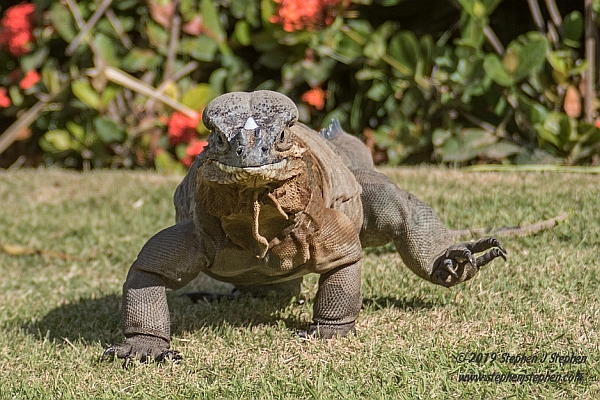
You can view more of my January and February 2019 images by clicking here.